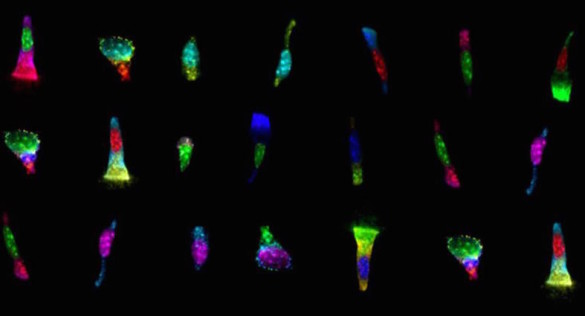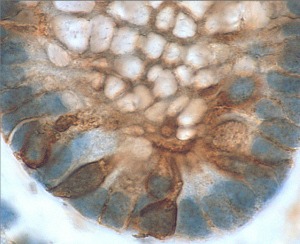
New technologies offer the opportunity to study cell signaling networks at single-cell resolution. A challenge, however, has been preparing single-cell suspensions from tissues while maintaining intact cell signaling states.
Now, Ken Lau, Ph.D., and colleagues have developed a method for preparing single-cell suspensions from epithelial tissues – the type of tissue from which many diseases arise. They describe the new method, DISSECT (Disaggregation for Intracellular Signaling in Single Epithelial Cells from Tissue), in the journal Molecular Systems Biology.
The investigators applied DISSECT to small intestinal epithelium after systemic treatment of mice with TNF-alpha, a factor with roles in inflammatory bowel disease, celiac disease and necrotizing enterocolitis. They showed that DISSECT preserves native signaling for Cytometry Time-of-Flight and fluorescent flow cytometry applications.
The findings reveal subsets of interacting intestinal cells that respond by different mechanisms to TNF-alpha, and support using DISSECT to study signaling networks in a wide range of complex epithelial tissues.
This research was supported by a Crohn’s and Colitis Foundation of America Career Development Award, the AACR-Landon Foundation Innovator Award and by grants from the National Institutes of Health (CA095103, TR000445, DK058404, CA068485) and the Department of Veterans Affairs.
Send suggestions for articles to highlight in Aliquots and any other feedback about the column to aliquots@vanderbilt.edu















